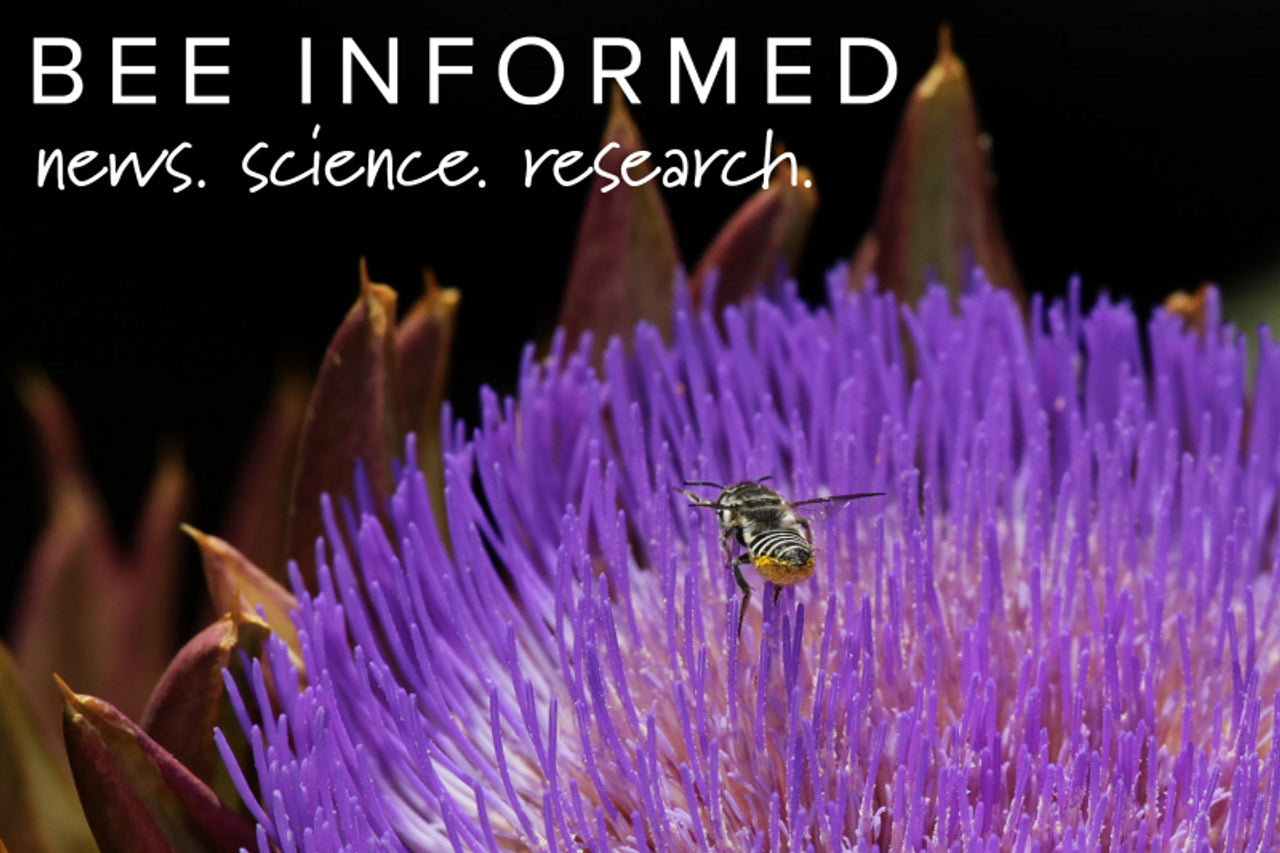
Each month our Bee Informed Blog highlights current news, science, and research related to solitary bee conservation, food insecurity, and sustainability.
1. She ripped up her manicured lawn and challenged the norms of gardening stories
(npr.org, by Melissa Block) "I love a person who talks kindly to plants," poet Camille Dungy writes in her new contemplative memoir. And for sure, Dungy can be counted among those who do exactly that.
In Soil: The Story of a Black Mother's Garden, Dungy describes her years-long project to transform her weed-filled, water-hogging, monochromatic lawn in suburban Fort Collins, Colo., into a pollinator's paradise, packed instead with vibrant, drought-tolerant native plants. Continue reading...

2. LA Times Today: She quit her desk job to chase her passion — finding California native bees
(latimes.com) Most of us can recognize a honey bee, but did you know that they’re not native to California? Hundreds of other bee species are though and while honey bees are social, live in hives and make honey, most of California’s native bees don’t do any of that. They’re solitary, live in wood or underground and do not make honey.
Artist-turned-community scientist Krystle Hickman has spent the last few years photographing California’s native bees and wants to share what she’s learned. Continue reading...

3. Bees flock to clearcut areas but numbers decline as forest canopy regrows, OSU research shows
(Oregon State University, By Steve Lundeberg) Native bees in the Oregon Coast Range are diverse and abundant in clearcut areas within a few years of timber harvest but their numbers drop sharply as planted trees grow and the forest canopy closes, research by Oregon State University shows.
The findings are important for understanding the roles forest management might play in the conservation of a crucial pollinator group, the researchers said. Continue reading...

4. EPA Report on Neonics Proves US Has 'Five-Alarm Fire' on Its Hands, Green Groups Say
(commondreams.org, By Kenny Stancil) A newly published assessment from the U.S. Environmental Protection Agency warns that three of the most commonly used neonicotinoid insecticides threaten the continued existence of more than 200 endangered plant and animal species.
"The EPA's analysis shows we've got a five-alarm fire on our hands, and there's now no question that neonicotinoids play an outsized role in our heartbreaking extinction crisis," Lori Ann Burd, environmental health director at the Center for Biological Diversity (CBD), said Friday in a statement.
"The EPA has to use the authority it has to take fast action to ban these pesticides," said Burd, "so future generations don't live in a world without bees and butterflies and the plants that depend on them." Continue reading...

To stay up-to-date on bee-raising tips and reminders, events, pollinator research, and sustainability insights, sign up for our monthly BeeMail newsletter and follow us on social media!


